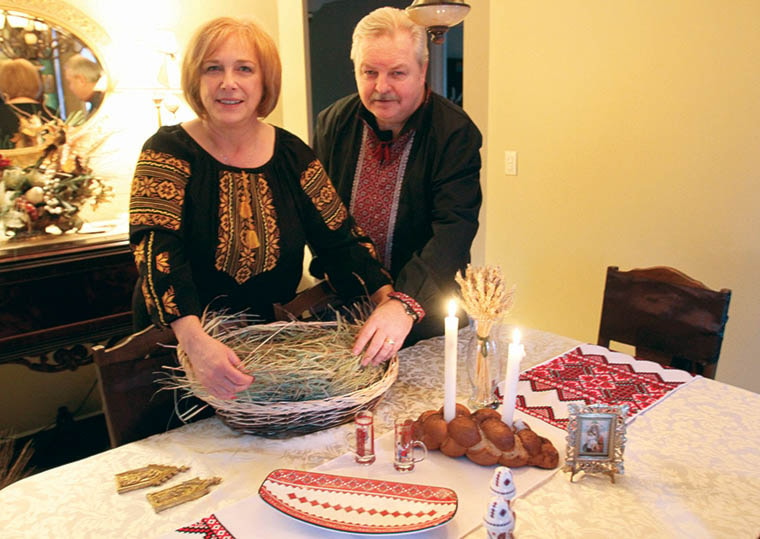Orthodox Christmas is celebrated at the Prysunka family home with hay under the tablecloth, braided bread on the table, and 12 meatless dishes served to guests.
Arlene Prysunka is a second-generation Canadian.
Although the Red Deer resident was born in Glendon, half a world away from the country her grandparents left in about 1918, Prysunka is continuing to celebrate Ukrainian Christmas with much of the same traditions as when her grandmother was a girl.
“We are very proud to hold onto our heritage,” she said. “Life is so busy, but we have to . . . take the time to respect our traditions and the immigrants who came here to make a new life.”
On Sunday, the first star of the evening signaled the beginning of the Christmas Eve celebration of Holy Night.
It precedes today’s Orthodox Christmas Day, which falls annually on Jan. 7 under the Julian calendar used by the Orthodox Church. (It predates the more widely used Gregorian Calendar and runs about 13 days later.)
In their Deer Park home, the Prysunka family sat down on Sunday at a dinner table laiden with symbolism: There was hay reminiscent of Christ’s manger; wheat representing abundance; and 12 courses standing for the 12 apostles.
The dishes were meatless and free of dairy to acknowledge the importance of animals in farming culture, as well as their presence in the stable during Christ’s birth.
“We don’t eat them (today),” said Arlene Prysunka, whose family is not otherwise vegan.
Her husband, Sherwin Prysunka, started the meal by addressing the large gatherings of family and friends.
He lifted a spoonful of wheat mixture called kutya, and encouraged the guests to taste some for luck.
In more rustic times, the wheat would be thrown at the ceiling.
If it stuck, it was a sign of coming prosperity, “but we kind of skip that part,” said the Prysunka’s daughter, Stephanie LaPrairie. who noted wheat isn’t the easiest thing to scrape off stippling.
The flower shop owner, who took Ukrainian dancing as a teen, always felt lucky to celebrate two Christmases while growing up in Red Deer — Santa always came on Dec. 25th and then there was a second event to look forward to.
While the Jan. 7 Christmas brought no presents, there was always caroling and the preceding celebration of food, family and friends.
Making 12 complicated courses — including pickled fish, pyrogies, cabbage rolls, and borscht — is labour-intensive, but the 30-year-old is looking forward to passing on the tradition to her own daughter, Olea, who at one-and-a-half already has her own traditional Ukrainian dress.
LaPrairie noted the January holiday used to be a celebration of ancestors in pre-Christian times, and it still honours the legacy of loved ones.
Her own great-grandfather was an educated man who worked at a newspaper in Ukraine, which was then controlled by Russia.
Finding himself imperiled during the Bolshevik Revolution, he escaped to Canada, where his native language and skills weren’t recognized. But like many immigrants, her great-grandfather made the best of a new situation — which meant taking up farming.
LaPrairie said even when Ukrainian newcomers were given what was considered poor quality land, they dug out the rocks, made use of willow branches, and persevered in growing crops to give their children a better life.
Maintaining the Orthodox Christmas tradition is, in part, about remembering “where we came from,” she added.
“If our (ancestors) didn’t make sacrifices and emigrate to Canada, we wouldn’t have the lives we have now.
“It’s our responsibility to pay tribute to their hard work and sacrifices.”
lmichelin@www.reddeeradvocate.com
